Pruning around the pond: vegetation control is important for lake maintenance
By Matt Ward
There are many aspects to aquatic vegetation and we’ll explore several of them over time with this blog, but here we want to focus on management and control of pond weeds.
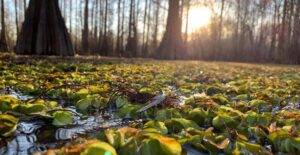
With everyone receiving their spring pond stocking, it is important to not neglect the vegetation, which may prevent pond managers from getting the most out of their stockings in the year to come.
Certainly, not all vegetation is a detriment to a healthy fishery and moderate amounts of growth are to be encouraged in some situations. Desirable growth will not detract from your lake’s aesthetics, and will also absorb excess nutrients, reduce erosion, and allow you to effectively fish the lake.
Vegetation in the right amounts can also give small fish a place to grow up and avoid over-predation, and even provide bass with quality ambush points for efficient feeding.
The rest of the time, some form of vegetation management will be in order to maintain the fishery and the overall function of the lake. It’s a good idea to make vegetation management part of your overall pond management and maintenance activities.
Why Manage Vegetation Growth?
Of course there are always functional and aesthetic reasons to control vegetation growth on ponds and lakes. Many good resources are online to help you identify vegetation and learn how to control it, such as Texas A&M’s AgriLife Extension AquaPlant site.
But in a broader sense, control of pond weeds boils down to extending the life of a pond or lake by slowing the aging process (the technical term is eutrophication).
 In short, lakes fill up over time with plants and sediment, so controlling vegetation means slowing the fill-in process. This is a long-term benefit of vegetation control but there are many more immediate benefits to good vegetation management.
In short, lakes fill up over time with plants and sediment, so controlling vegetation means slowing the fill-in process. This is a long-term benefit of vegetation control but there are many more immediate benefits to good vegetation management.
Dense vegetation growth will actually allow your baitfish to escape predation and make your bass go hungry. A fresh pond stocking of bluegill could very well hide in dense vegetation, preventing your bass from benefiting from the effort.
Healthy bass fisheries usually only have 10% to 15% vegetation coverage. Vegetation should be controlled when coverage hits or exceeds 20% coverage. The right amount of vegetation is especially helpful to fishermen as it will help them easily identify the “fishy” areas of the lake since vegetation provides a simple visual cue for fishermen to target.
Too much vegetation can put too much demand on your dissolved oxygen levels, especially during warm weather or in the presence of a healthy fish population.
Certainly, plants produce oxygen during sunny weather and during the day, but at night and in cloudy weather, plants use oxygen just like all other living organisms. If dissolved oxygen levels fall too far, a fish kill could result.
This kind of kill is especially likely when dealing with floating plants like hyacinth or duckweed, which can literally smother a pond. Interestingly, studies done on dense stands of vegetation have found oxygen levels to be near zero in the heart of the vegetative stand – meaning there can actually be too dense of growth to allow fish to live inside that stand even when the lake in general is perfectly habitable to fish.
Apart from biological reasons to control pond weeds, excess growth can block recreational access, preventing fishermen from having clear casting lanes from the shore or from accessing various portions of a waterbody by boat.
Vegetation can also prevent effective fishing when fishermen spend more time cleaning pond weeds from their lures than actually fishing. This is, of course, particularly frustrating to young anglers.
Begin with the Outcome in Mind
Most discussions on vegetation devolve into management methodology, but never forget that determining the desired outcome is certainly the first step in determining the best strategy to manage your vegetation.
In fishery management we are always encouraged to pursue integrated pest management strategies for best results. Once growth of pond weeds has reached the management threshold (growth exceeds desired level), we want to generally consider three options for management: mechanical, biological, chemical.
Mechanical
If the amount of vegetation that is growing is light or you need to quickly remove growth from a particular area, mechanical control may be the best management option.
Most of the time this would involve raking up vegetation around a dock, removing a few plants that grow up in the wrong location around a lake, or perhaps clearing pond weeds from around a water intake.
In some situations, mechanical harvesters could be employed to remove larger stands of vegetation to open up water and remove some biomass. In general, mechanical removal is labor intensive and results are short lived.
Biological
Next, biological control should be considered.
Triploid grass carp have particular vegetation preferences that should be considered, but in general, these sterile vegetation-eating fish can provide general and non-specific control of vegetation growth.
When stocked at the right level, some vegetation can persist while the bulk of the vegetation stand is reduced. In general, grass carp will take a couple of years to reach their management potential and then may persist in a given water body for up to around 15 years.
It should be known that in certain situations, grass carp will exceed their management objective and need to be removed after introduction in some waters. Excess grass carp prevent all forms of vegetation growth and may muddy the water.
Tilapia offer a second form of biological control. Tilapia are omnivores and do eat plants, but tilapia really shine in their ability to control algae growth.
Each water body is different, but at high densities, algae control has been consistently achieved in a variety of water bodies. Be sure to follow state rules on stocking tilapia, but at the moment no stocking permit is required in Texas.
Do note that tilapia will compete with sunfish to a degree and ultimately reduce your lake’s sunfish carrying capacity.
Tilapia provide a decent alternative forage for bass, but check with your biologist to consider the impact tilapia will have to your water body before stocking. Do note that tilapia are tropical fish that can survive some mild Texas winters (especially in southern Texas), though they generally require annual stockings for their populations to be maintained.
Chemical
In most cases, chemical control will be required to achieve the desired level of vegetation control.
There are a lot of factors to consider in how to approach managing vegetation and algae with chemistry and we will go into this in more detail next week.
Until then, go check on your lakes and ponds and see if you can begin to identify vegetation issues before they start to get out of hand. This is the time of year we can actually get a jump on pond weeds before they get out of control.
Why Choose Lochow Ranch for Pond & Lake Management
Serving Texas, Oklahoma, Arkansas and Louisiana, Lochow Ranch Pond & Lake Management proudly puts more than two decades of experience to work for you. Our team includes biologists, technicians and other professionals with deep expertise in pond and lake management services.
Check us out if you are considering building a lake, looking for pond stocking services, to buy fish for a pond, or getting professional pond management and maintenance or fishery management. Our services include lake design, pond construction, pond renovation, pond water testing, electrofishing, pond stocking, control of pond weeds, and pond liming and fertilizing. Let us help you build your dream pond that will delight your family and friends for generations to come.
Click here to get in touch to get started today.
Matt Ward is a Fishery Biologist for Lochow Ranch Pond & Lake Management. He has a Master of Science in Biochemistry from Texas A&M University and has worked in fisheries management in Texas for 15 years. He brings a passion for good science and an interdisciplinary approach to the natural sciences to help property managers steward their aquatic resources and achieve management objectives.
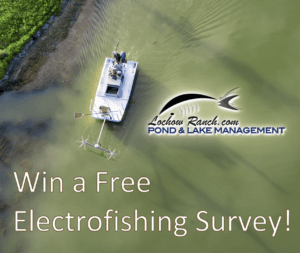
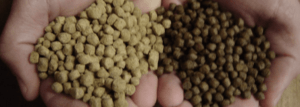
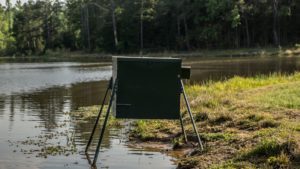 If you can visit your pond multiple times per day, every day, hand feeding will easily accomplish your purposes of feeding the fish.
If you can visit your pond multiple times per day, every day, hand feeding will easily accomplish your purposes of feeding the fish.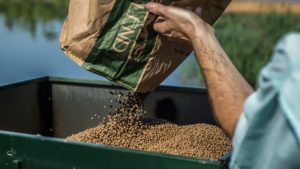 A few general principles apply: First, feed during daylight hours. Feeding during the day avoids allowing predators to grab a quick meal under the cover of darkness.
A few general principles apply: First, feed during daylight hours. Feeding during the day avoids allowing predators to grab a quick meal under the cover of darkness.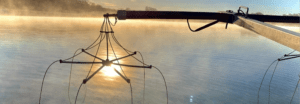

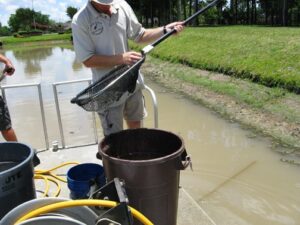 In addition to these direct observations, every decent fishery manager should be making many secondary observations that are critical to developing management strategies.
In addition to these direct observations, every decent fishery manager should be making many secondary observations that are critical to developing management strategies.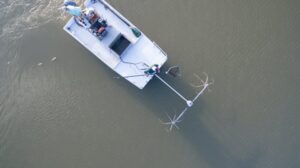
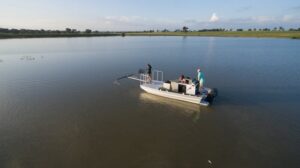 That being said, we shock throughout most of the year to assess loss to predation, the strength of a spawn, fish loss due to a flood, and to conduct selective harvest.
That being said, we shock throughout most of the year to assess loss to predation, the strength of a spawn, fish loss due to a flood, and to conduct selective harvest.
Recent Comments